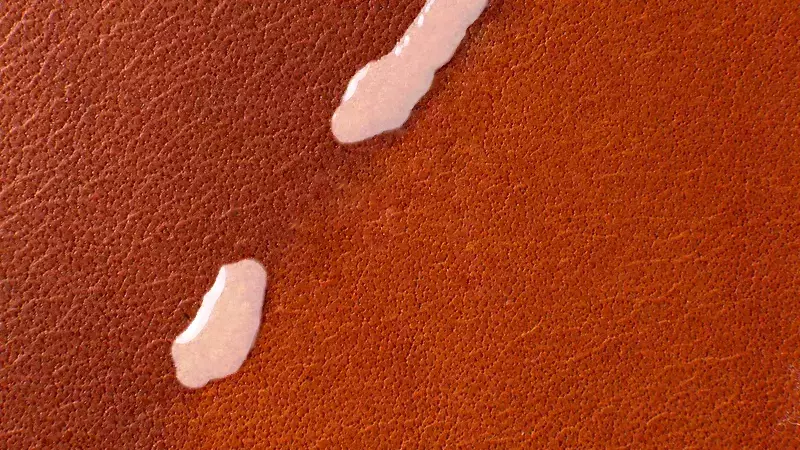How to Get Wax Off Leather: A Guide For Different Leather Types & Textures
If you’ve accidentally spilled candle wax on your leather, trust us that you’re not alone. In fact, this happens way too often, especially on leather couches, wallets, shoes, handbags, organizers, gloves or any other leather article you can think of.
The main challenge of trying to get rid of wax on leather is that you can’t simply wash it off. Instead you’ll need to follow a proven process to remove it correctly so it won’t damage your leather.
Secondly, leather is an extremely porous material, which means that it easily absorbs substances that it comes into contact with. Therefore, you’ll want to remove the wax as soon as possible using the right methods and tools.
The last thing we would like to point out is that while many other guides may focus on a general process on removing wax on leather, we will focus on different types and texture of leather.
It’s important to distinguish between them, as wax and some of these techniques will have a different effect on the type and texture of leather.
How to Get Wax Off Leather:
- Assess the Texture and Type of Leather
- Remove Off Wax Before It Hardens
- Harden Remaining Wax by Freezing It
- Scrape Off Wax After It’s Hardened
- Heat It Up With a Hair Dryer
- Soak Up Excess Wax With a Cloth
- Apply Leather Conditioner
This guide is dedicated to teaching you how to remove wax from various types and textures of leather. While you should aim to remove wax as soon as you can, at no point should you simply wipe, peel or scrape it off, without assessing your leather first.
1. Assess the Texture and Type of Leather
Some people may overlook the importance of understanding the type and texture of leather that you’re dealing with. The reason why it’s so important is because the way you’ll be treating your leather to remove the wax depends on the leather type and the texture.
Wax on Different Leather Textures
Think of the texture of your leather article, as a type of surface. Different types of leather articles come with different textures and finishes. For example, removing wax from smooth, pebbled and flat grain leather is much simpler as the texture is smooth and usually coated. In this scenario, the wax comes right off.
In comparison, removing wax from embossed and grainy leather is a little trickier, due to the uneven texture. You will need to consider this, when trying to scrape the wax off and also when you heat it up. But don’t worry, as we’ll share more about this later on.
Wax on Different Leather Types
Removing wax from leather not only depends on the texture of leather but also the type of leather that you’re treating. This is because full-grain, top-grain and genuine leather all have different fiber structures.
Moreover, removing wax from suede and nubuck may be tougher. This is because the soft-looking brushed texture absorbs wax easily and it’s look and feel can easily be affected by the wax removal process.
But don’t worry. Our comprehensive guide will point out what you’ll need to consider when you’re dealing with nubuck or suede leather items.
2. Remove Wax Before It Hardens
Regardless of the texture and type of leather, your first goal should be to remove some of the wax before it hardens. Admittedly, this is one of the hardest steps, as you’ll need to try and remove the wax without spreading it.
Important Tip: Do not wipe the wax off, especially with you’re treating nubuck or suede. This will cause the wax to spread, affecting a much larger area. Instead use a cloth or paper towel to soak up the wax repeatedly.
Using a soft cloth, extract as much of the liquid wax as you can. A paper towel or a soft cloth is great for this, as they do well in absorbing the wax. If you need to wipe, ensure that you do not spread it to other areas but only on the affected wax stain.
3. Harden Remaining Wax by Freezing It
While wax starts drying up fairly fast, it can take a while to fully harden. In the third step, your goal is to accelerate the hardening process of the wax, as this will make it easier for you to scrape off.
While you can wait for the wax to dry naturally on your leather, cooling it down with ice is the preferred option. You can simply take ice and place it in a sealable bag or a piece of cloth and dab it onto the wax stain of your leather.
Just ensure that no water condensation drips on the wax or your leather. As wax cools done relatively quickly, this process may only take about 30 to 60 seconds.
4. Scrape Off Wax After It’s Hardened
Once the wax has fully hardened, you can proceed to scrape it off. In order to do this, we highly recommend using an object that isn’t too sharp, so that you won’t accidentally damage your leather in the process.
Best objects to scrape wax off leather:
- Back of a knife
- Metal hairpin
- Metal nail file tip
- Cutlery handle
- Tweezers
Now, gently push the wax on either side and watch it slowly come loose on your leather. Depending on its size, the wax may break, which is completely normal.
Repeat this process until all of the wax is removed. You’ll most likely see some darker spots on your leather after you’ve removed the wax. This is the wax that your leather has absorbed. But don’t worry, there’s another method we’ll teach you in the next step.
5. Heat It Up With a Hair Dryer
Your goal now is to heat up the wax again so that you can remove the darker wax stains that have penetrated your leather. These may be quite hard to remove, depending on the type of leather you’re working with. The more porous the leather, the more the wax may have penetrated it.
Heating Up Wax On Suede or Nubuck
You’ll need to be a bit more careful with the reheating process when it comes to working with suede or nubuck. This type of leather is typically made from the underside of skin, which lends it its soft surface and napped texture.
Reheating wax to a liquid state may cause it to move about and affect other parts of your suede or nubuck product. Therefore, only aim to reheat it to a semi-liquid state and then try to remove it. This is extremely important!
6. Soak Up Excess Wax With a Cloth
Using a hair dryer, heat up the remaining wax and soak up the liquid wax (or semi-liquid when working with suede or nubuck) using the same type of cloth or paper towel..
Make sure that if you’re working with leather articles that have uneven surfaces such as leather couches, shoes, bags, that the wax doesn’t move about and affect other areas. Whenever possible, flatten the surface or minimize the heating process.
7. Apply Leather Conditioner
Now, all or most of the wax should be removed. If you find any more spots, simply repeat the process until all of it is gone. Your task is now to apply your preferred leather conditioner.
Wax stains may leave your leather slightly discolored (slightly darker as your leather absorbs some of it), although this may only be temporarily. A leather conditioner has the ability to evenly coat and correct any discolorations when applying an even layer.
Here it’s best to follow the application instructions of your preferred leather conditioner. After that, you’re all done!

About Gerrit
Co-Founder, Researcher & Writer At Leatherskill
I’m a leather enthusiast who spends most of his free time crafting, researching, and writing about the many facets of this versatile material. Thanks for reading!

